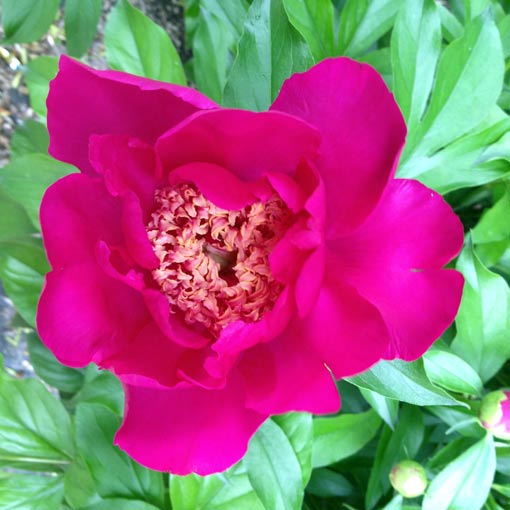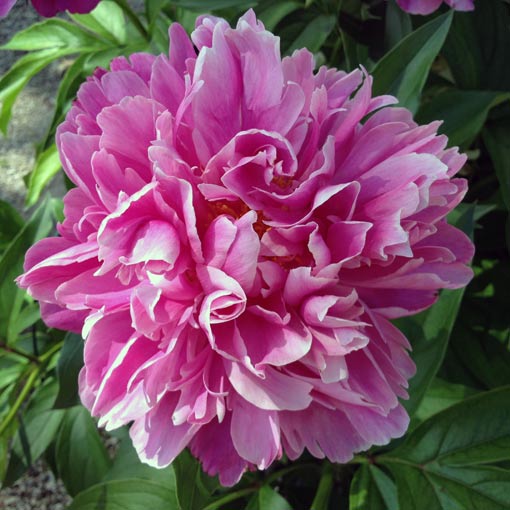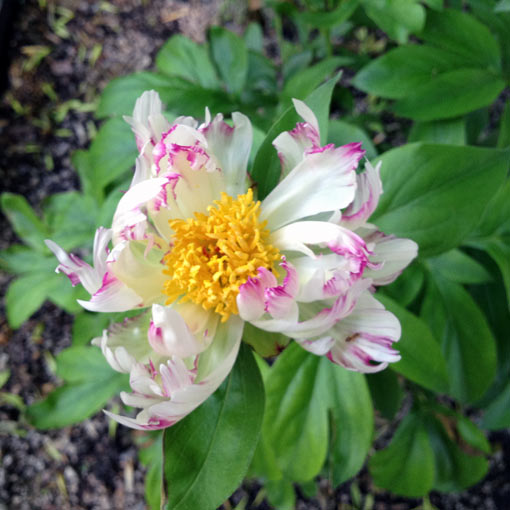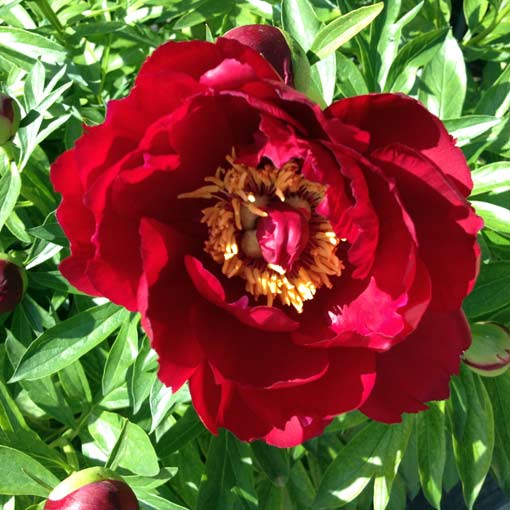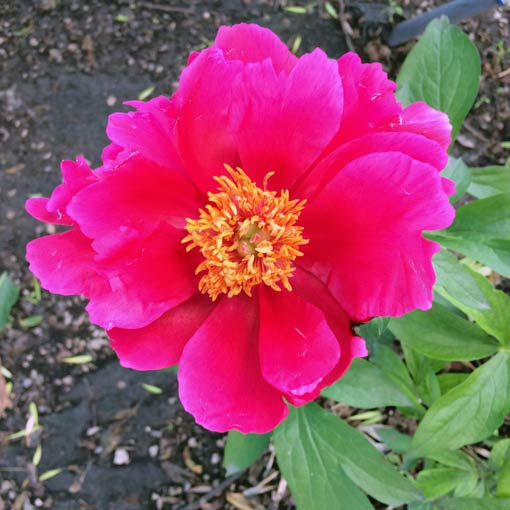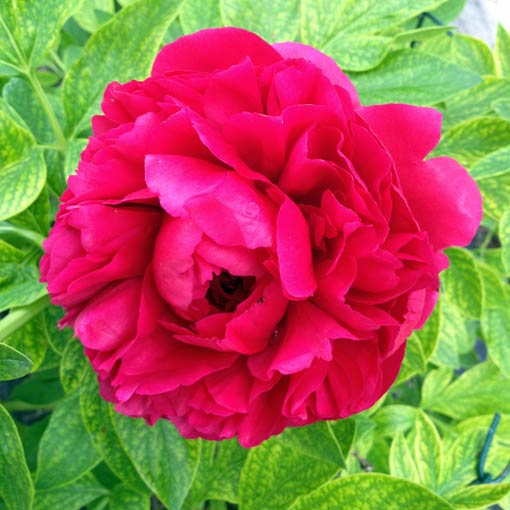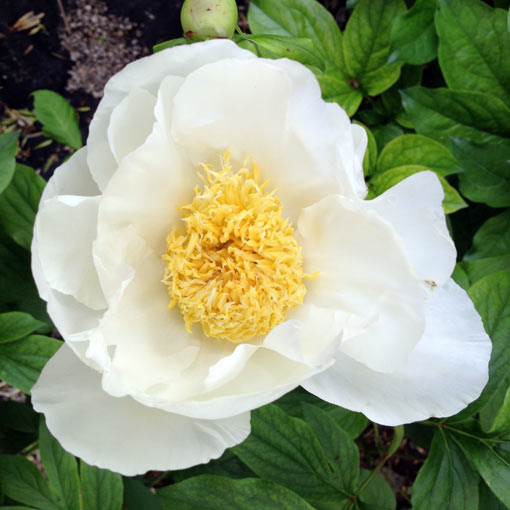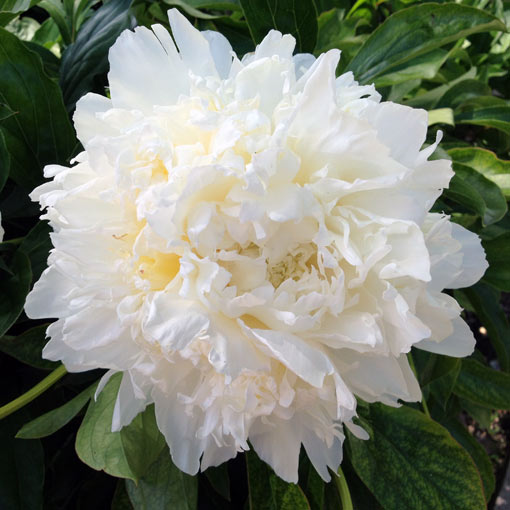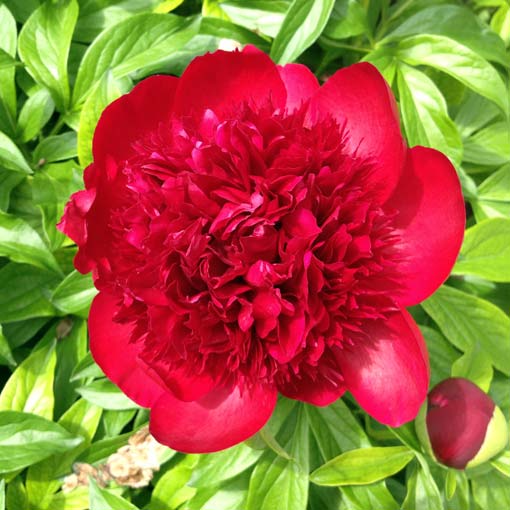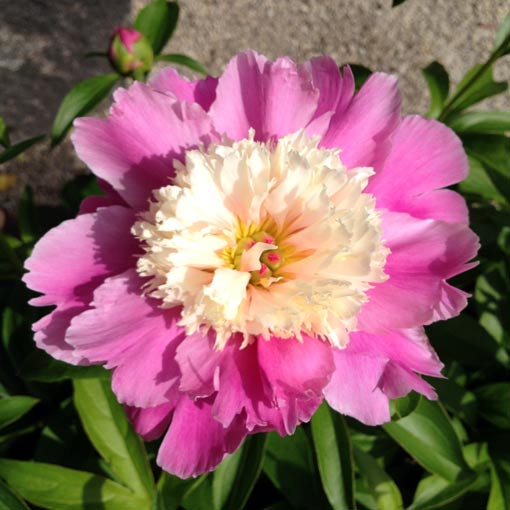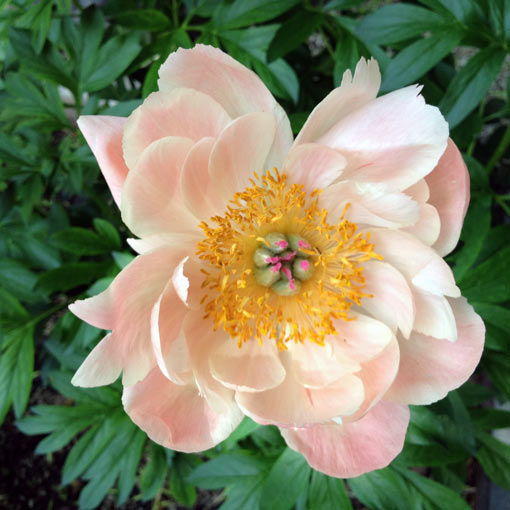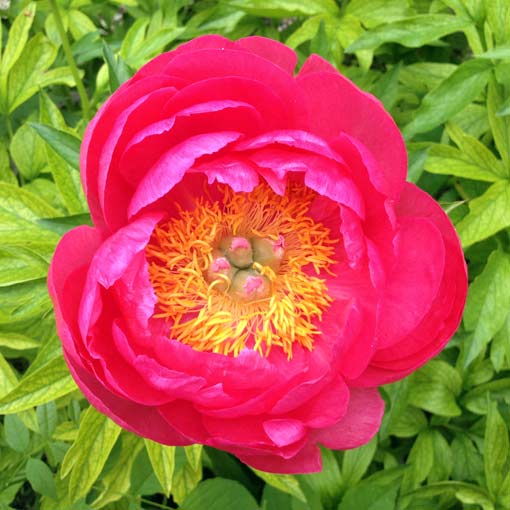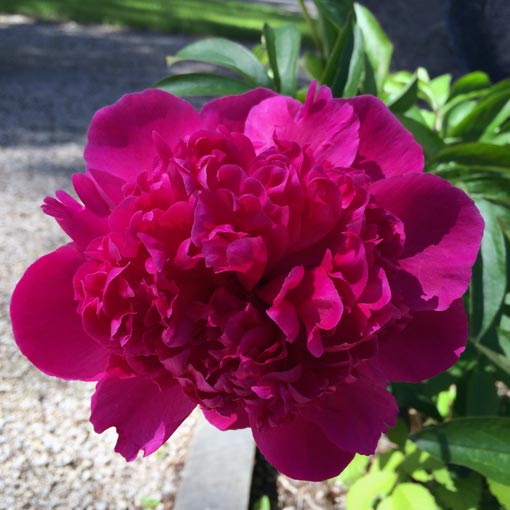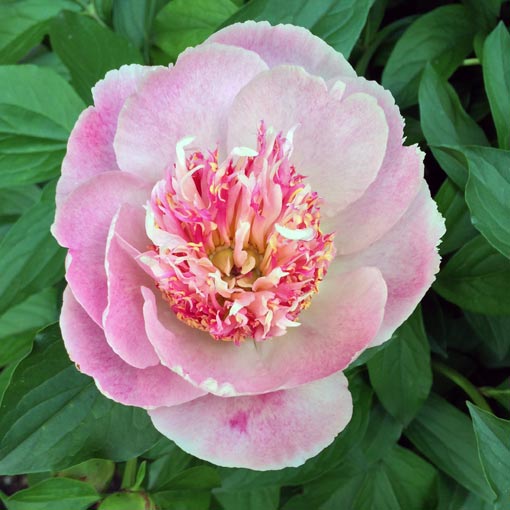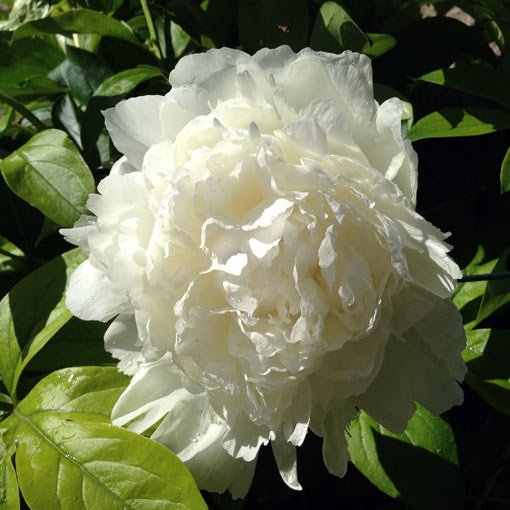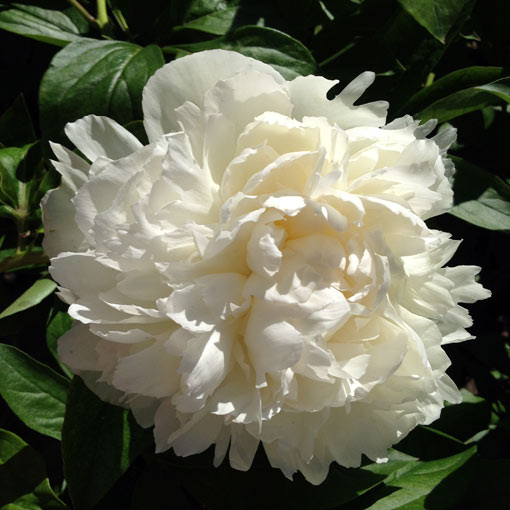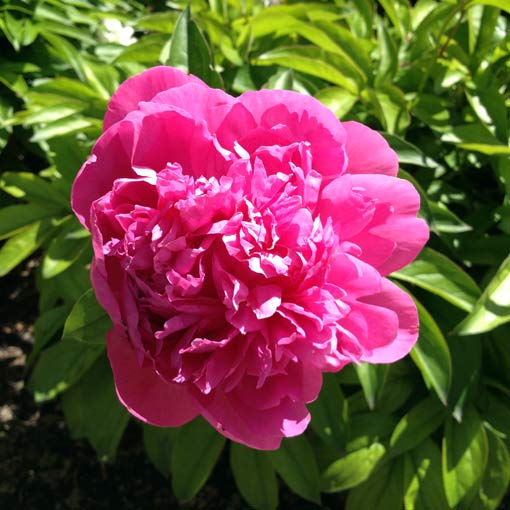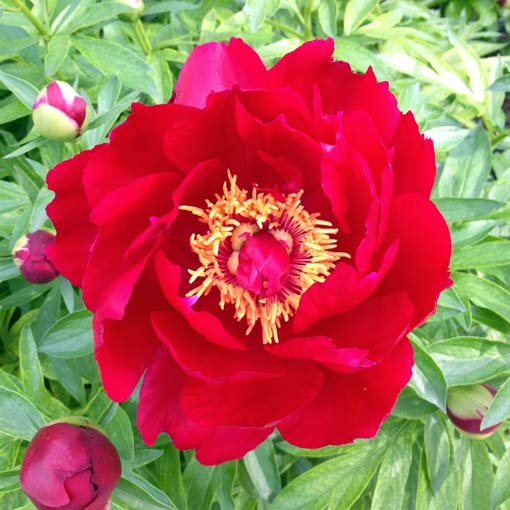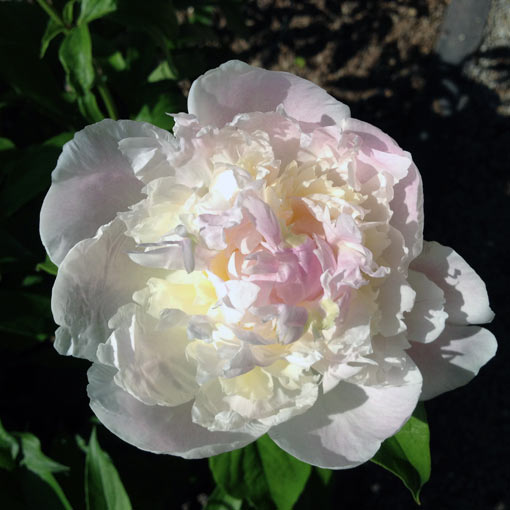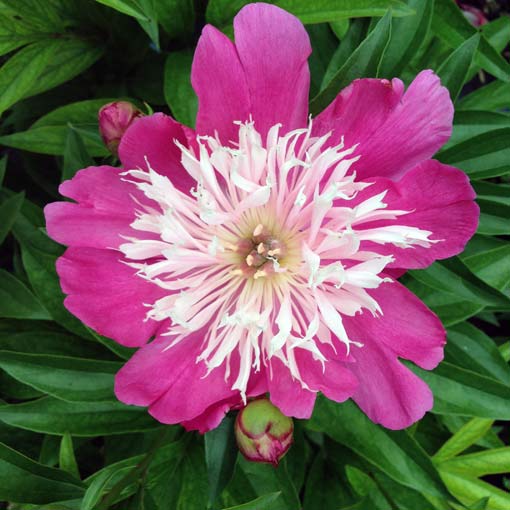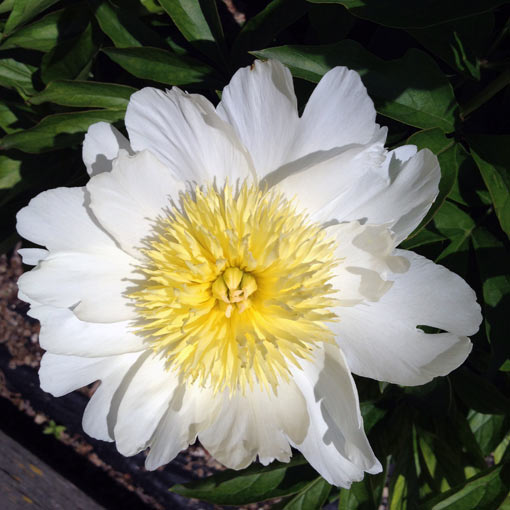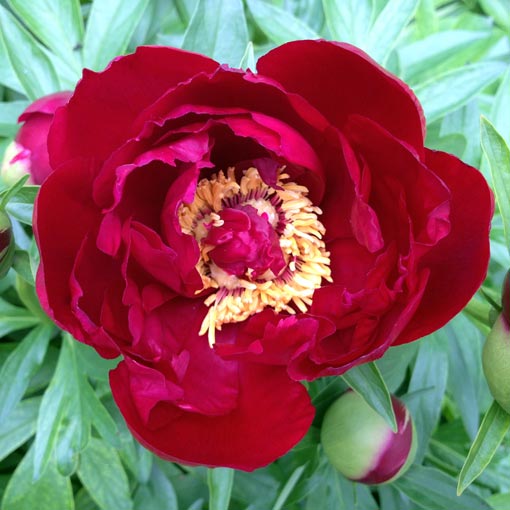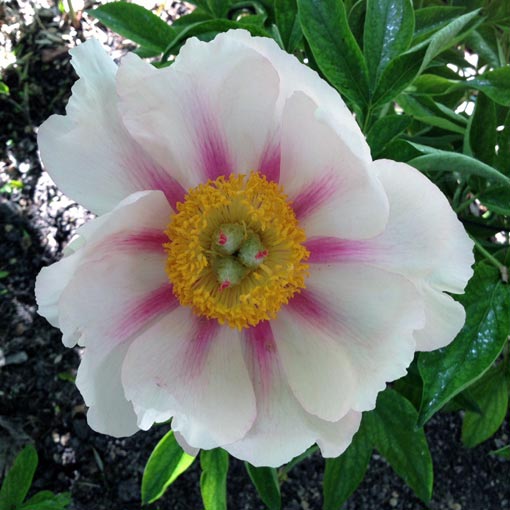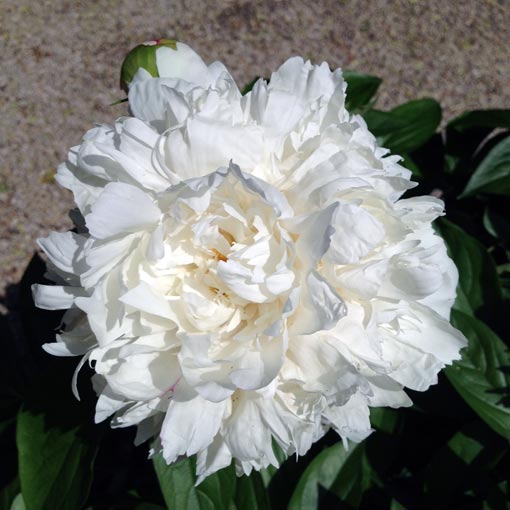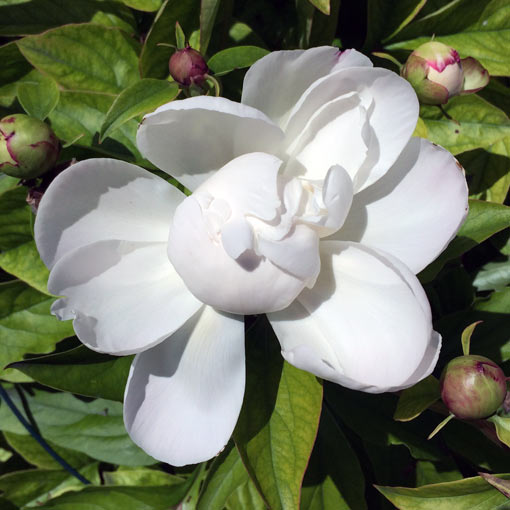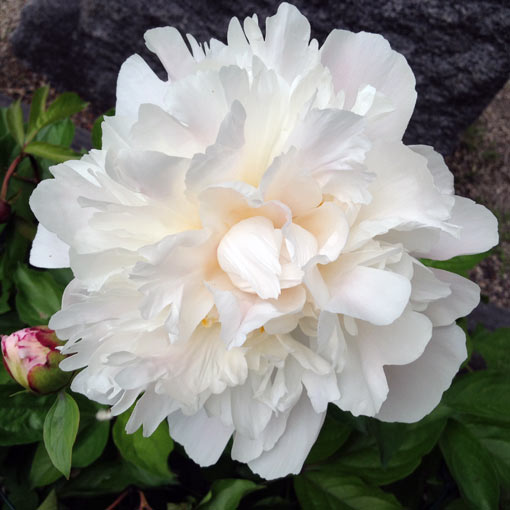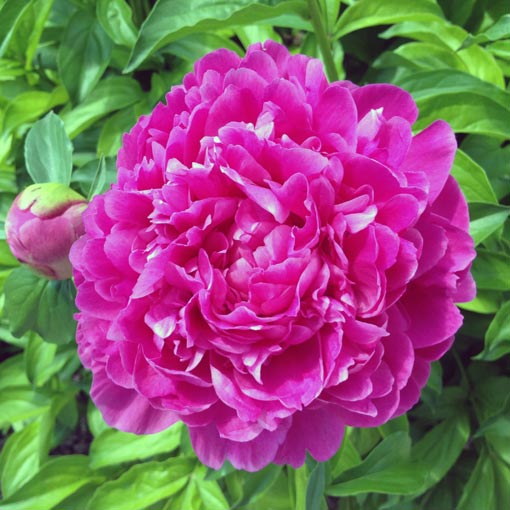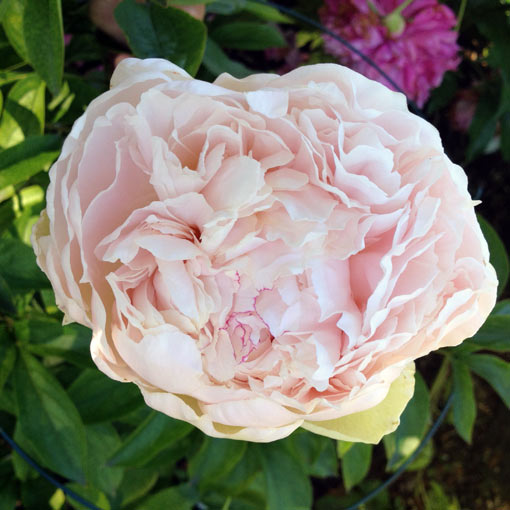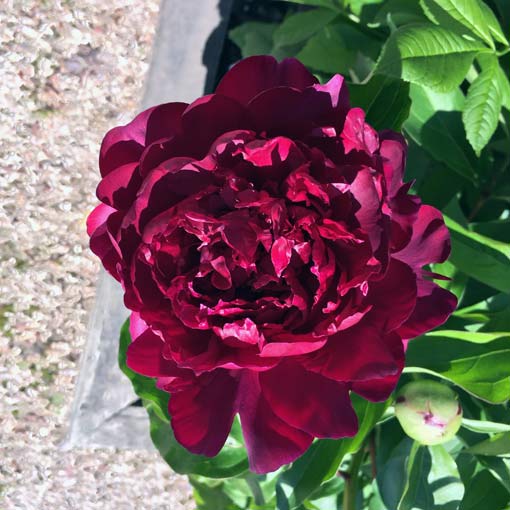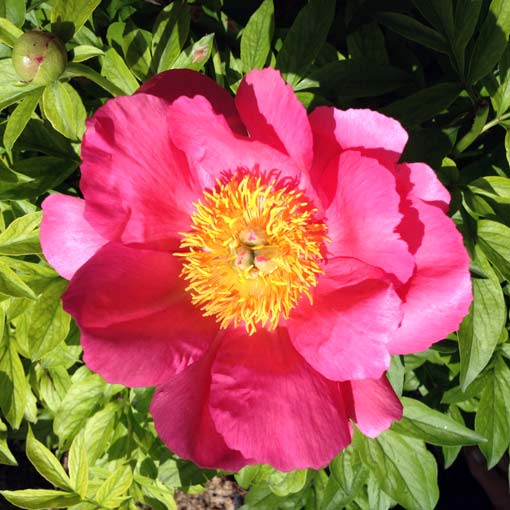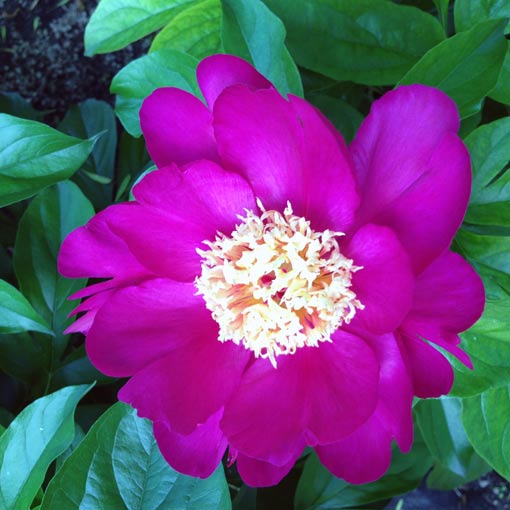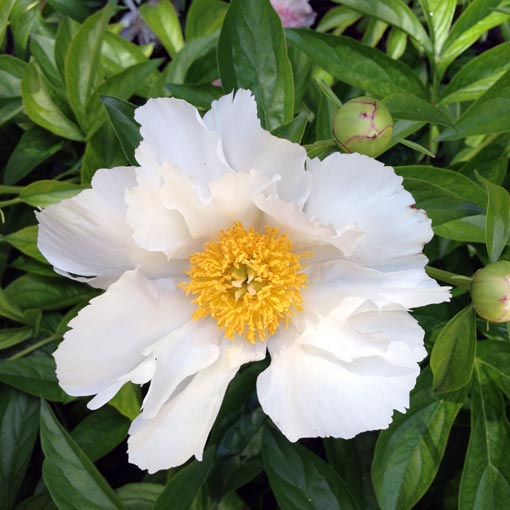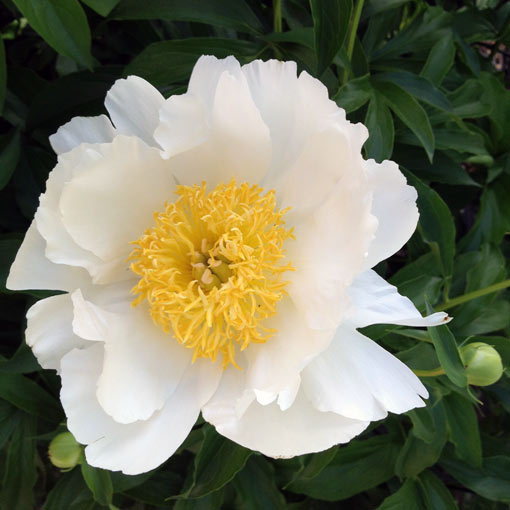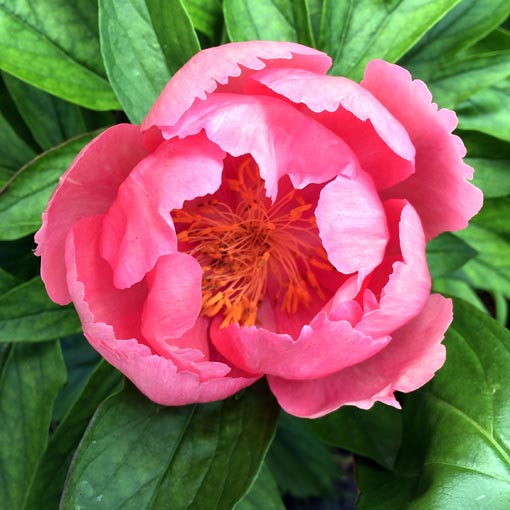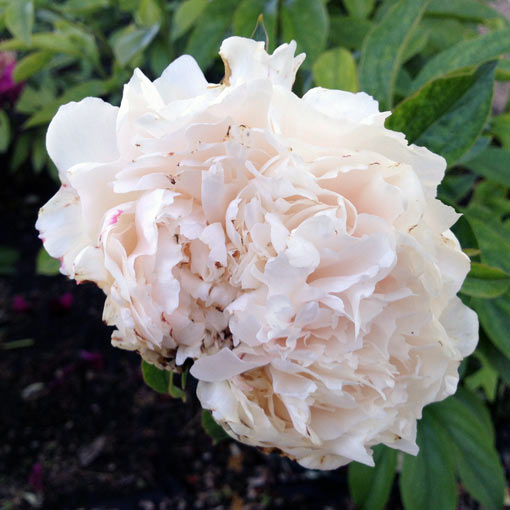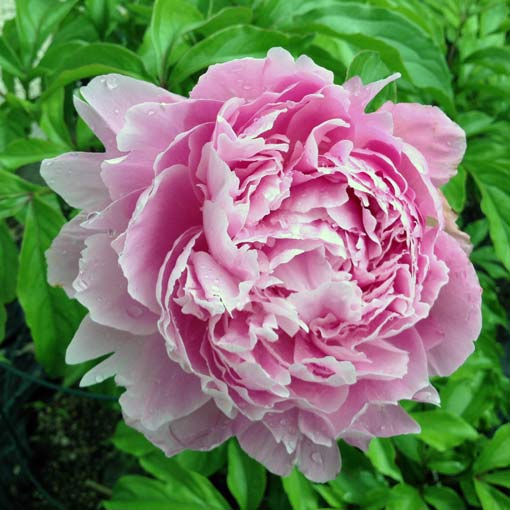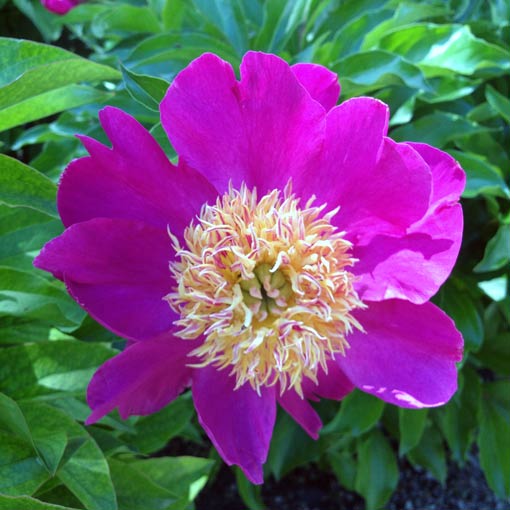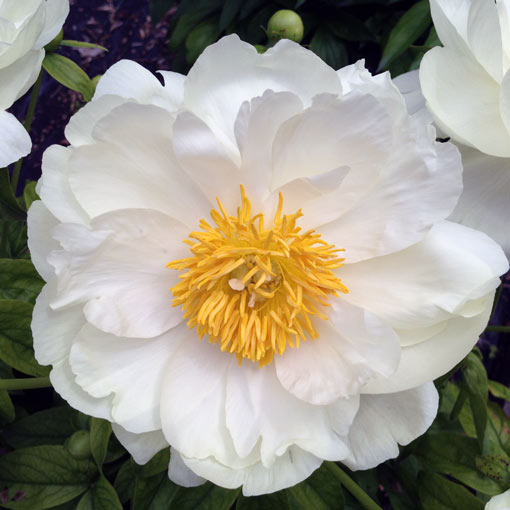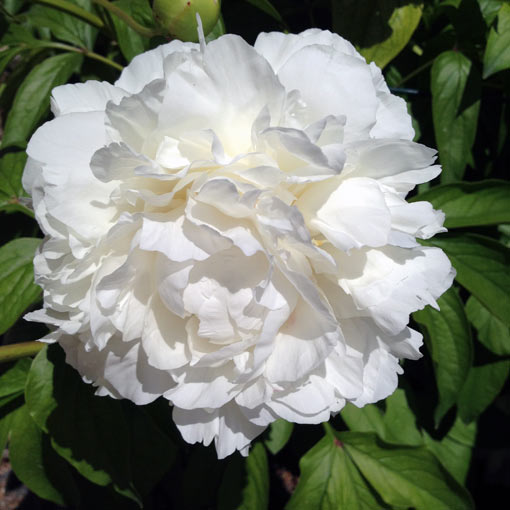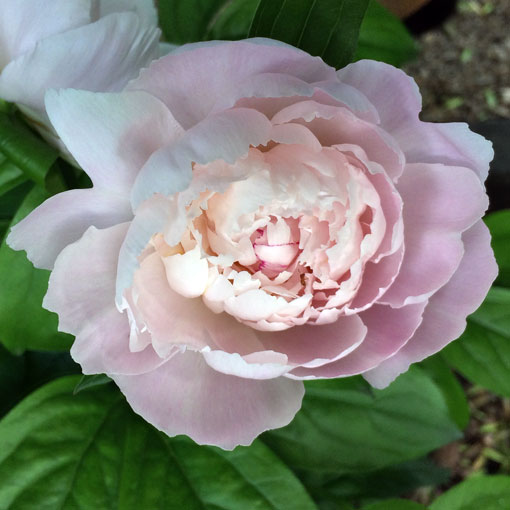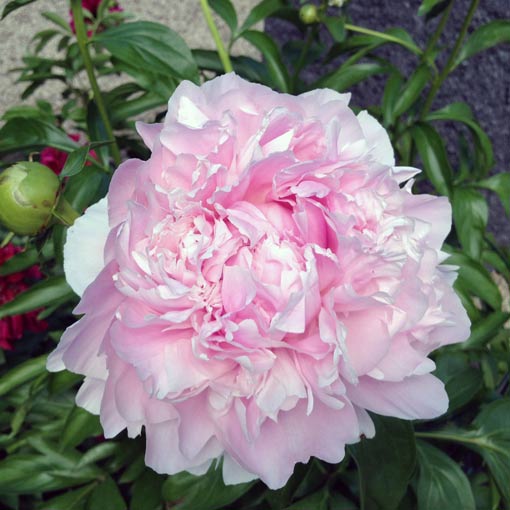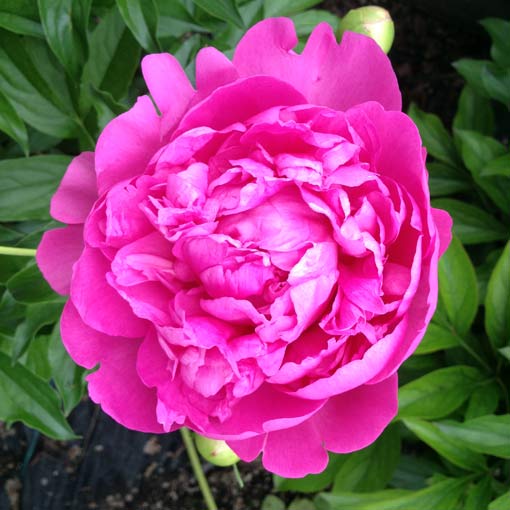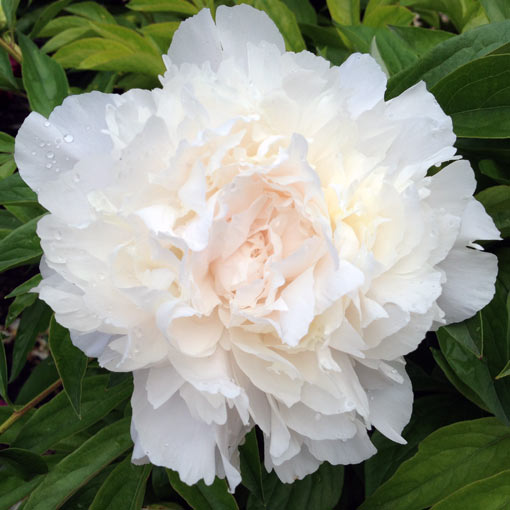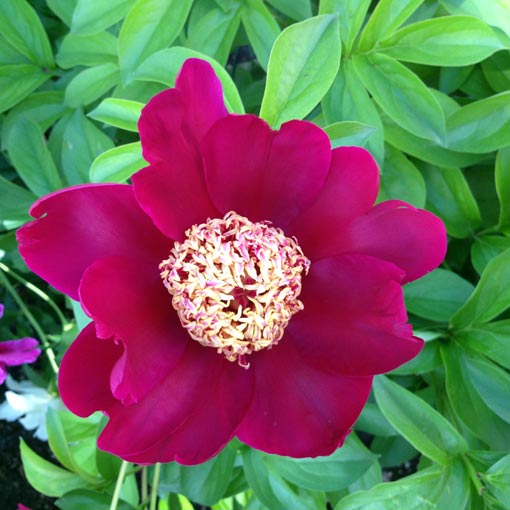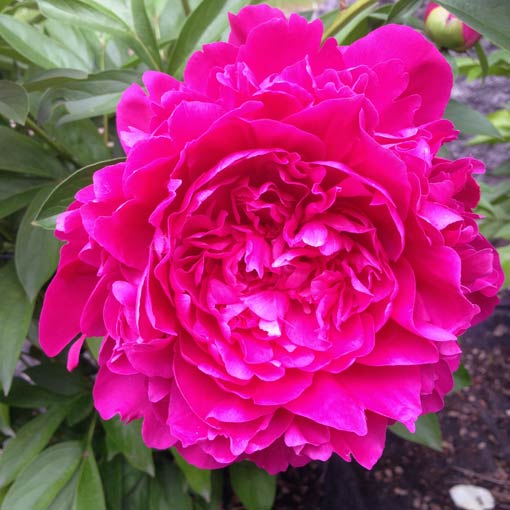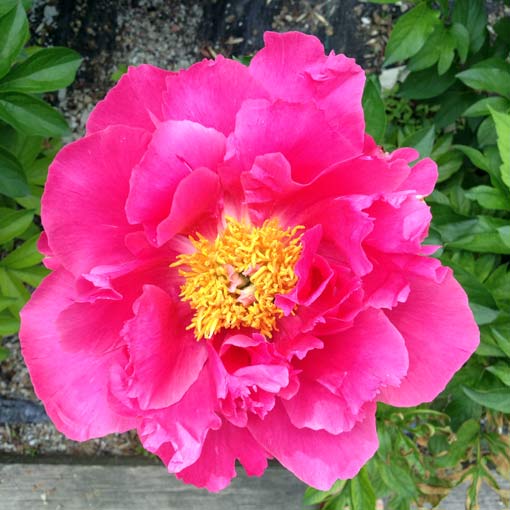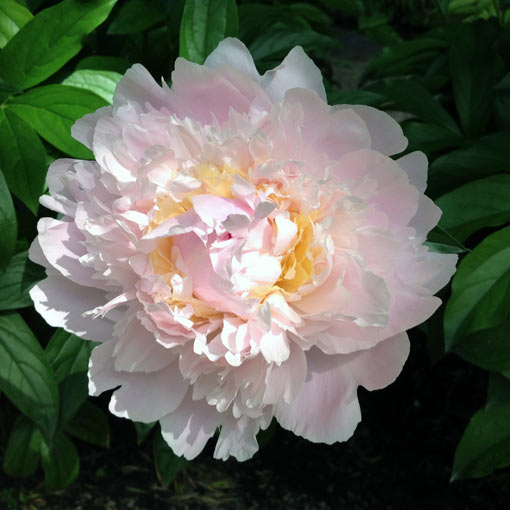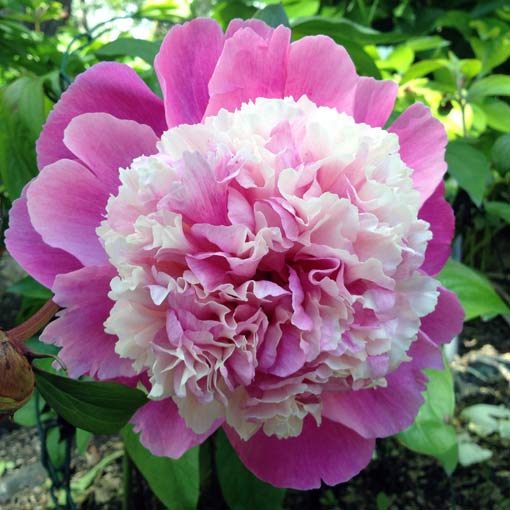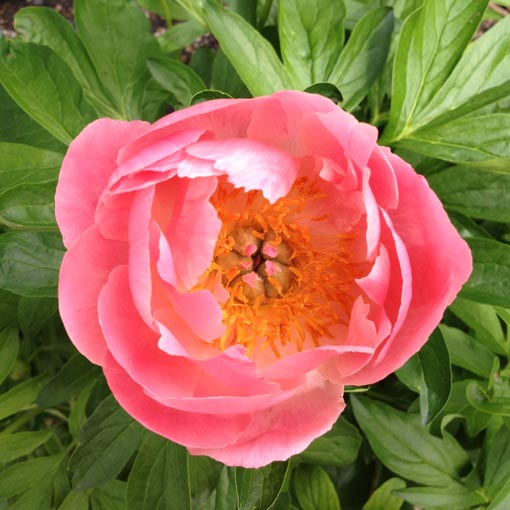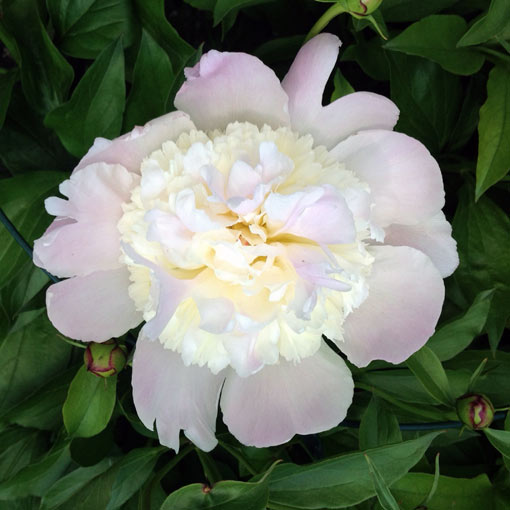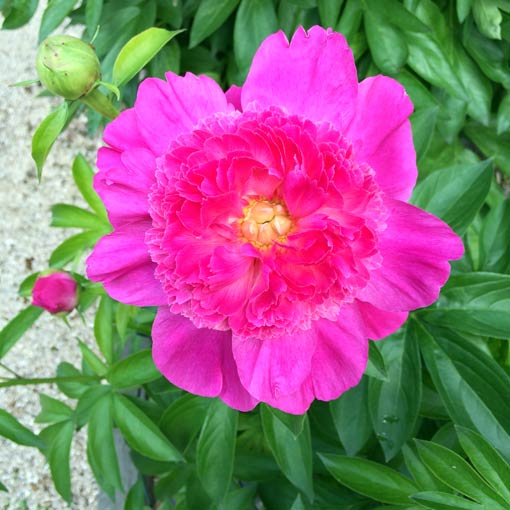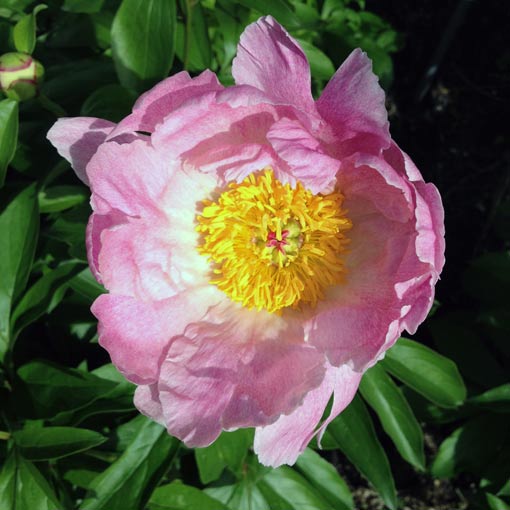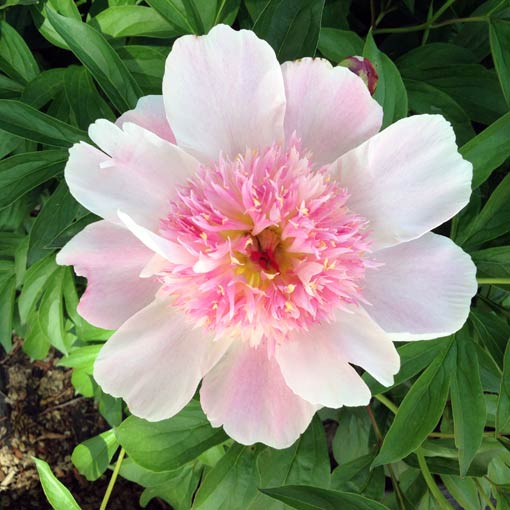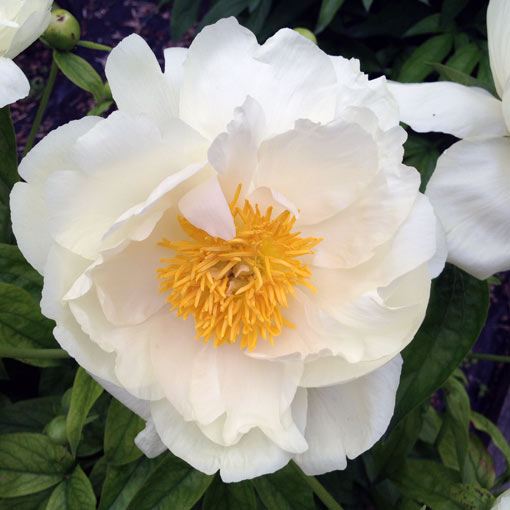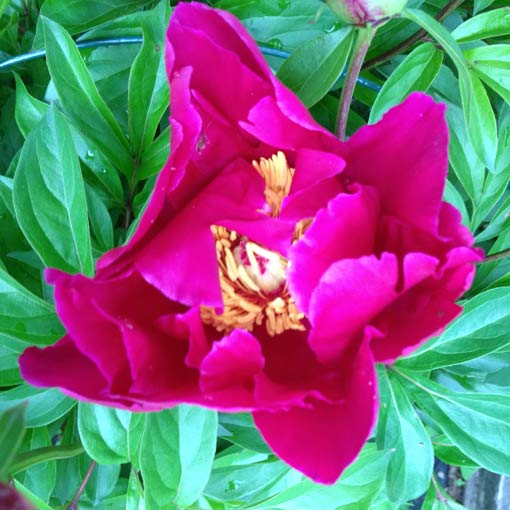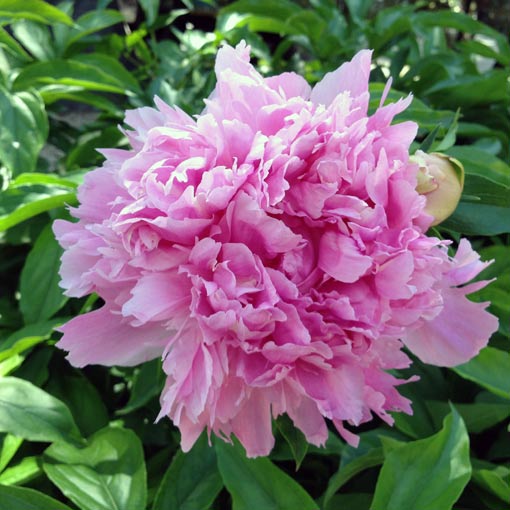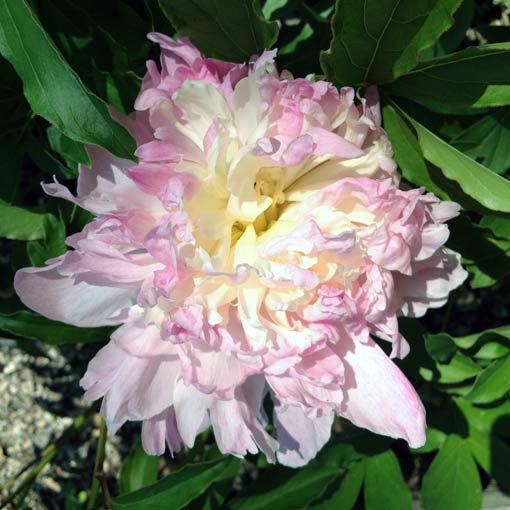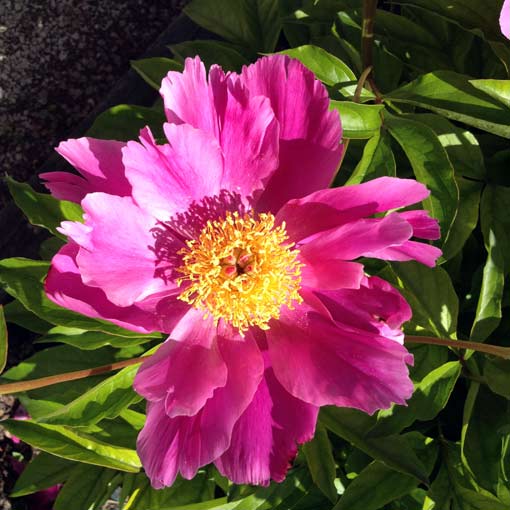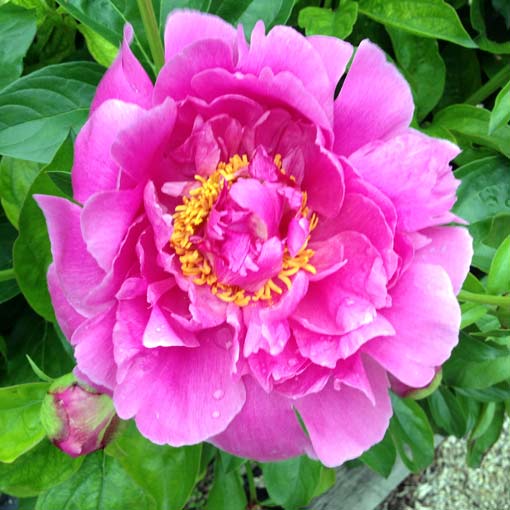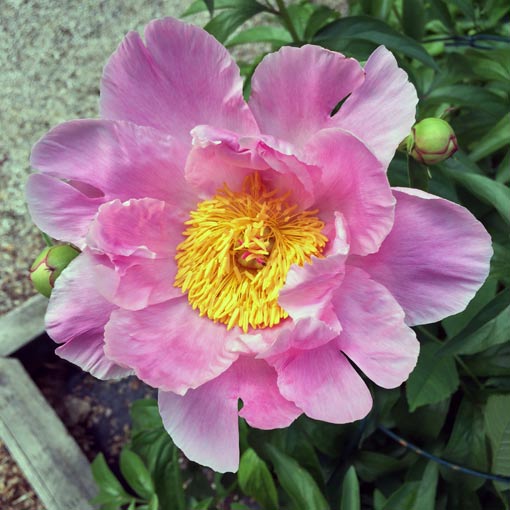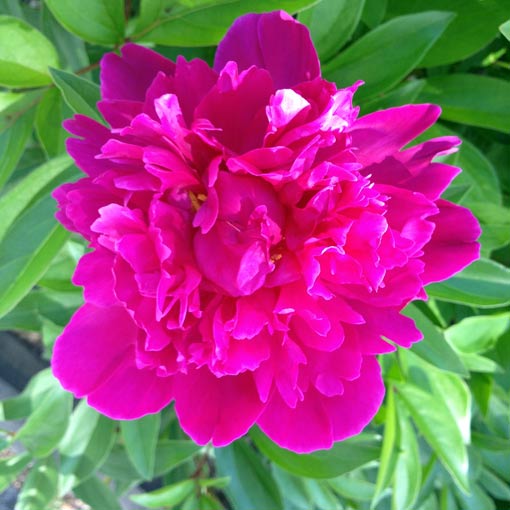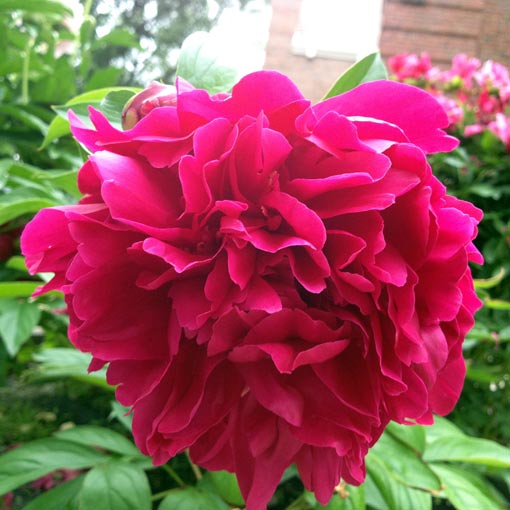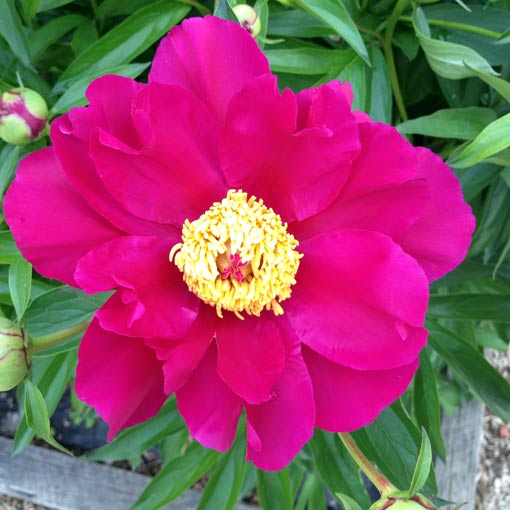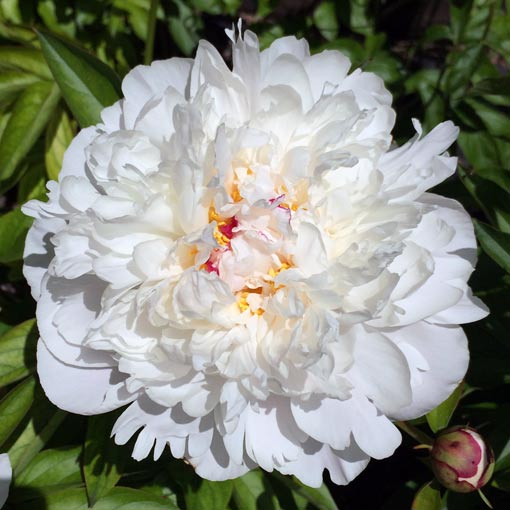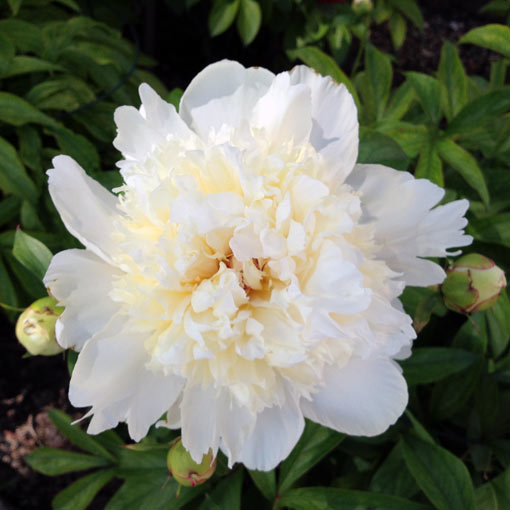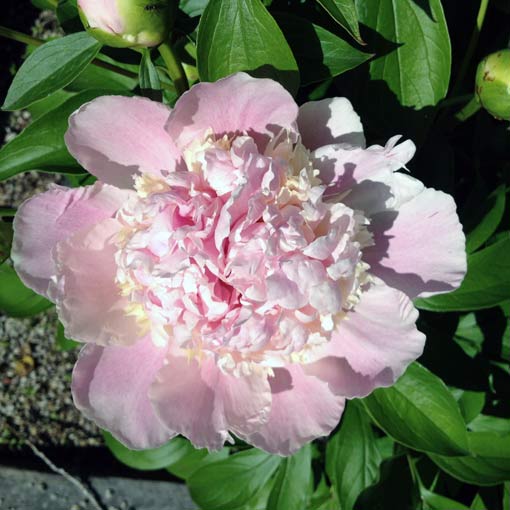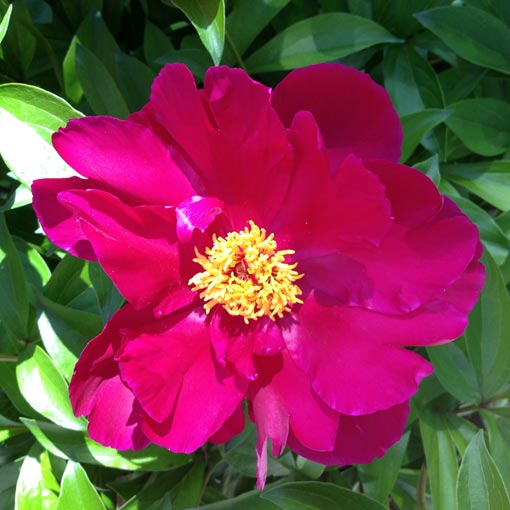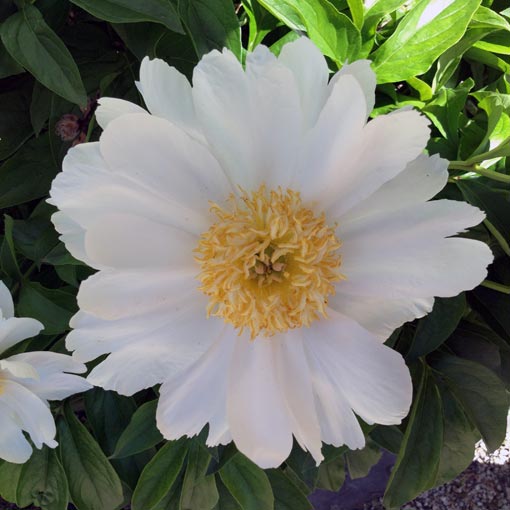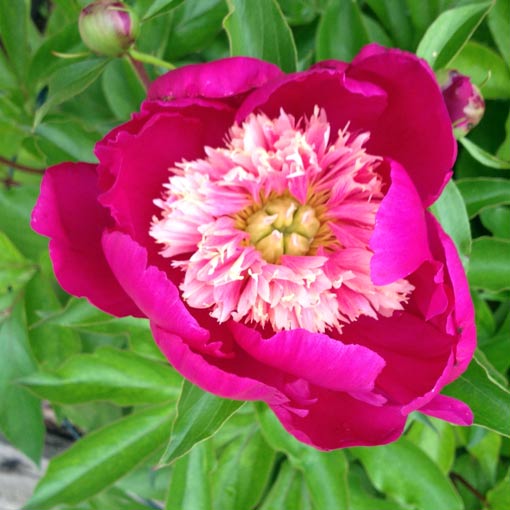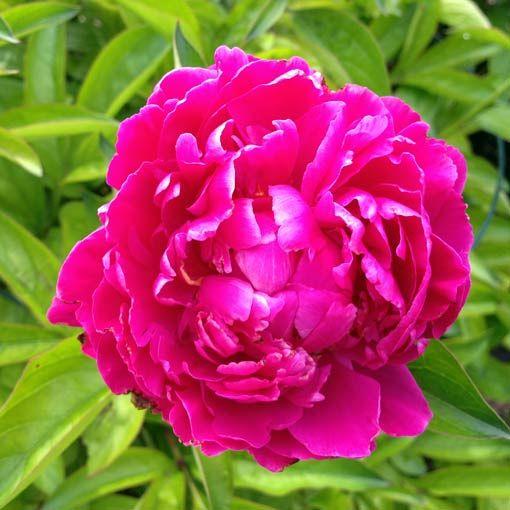HISTORY OF THE PEONY GARDEN
September 1989: the North Dakota Museum of Art opened in its permanent home, a renovated 1907 gymnasium on the campus of the University of North Dakota. While situated on its own patch of land, the Museum is surrounded on three sides by roads and parking lots. As the director of the Museum and the descendent of early North Dakota settlers, I was interested in enfolding the Museum in a garden that paid homage to those settlers. As they moved West, they brought with them the rudiments of culture: a few books, a memory bank of songs, an occasional musical instrument, and plant cuttings dominated by peonies and lilacs. Trading was the quickest way to add plants to a garden and soon the Rosa rugosa ‘Hansa’ and “Harrison’s Yellow” rose were added to the peonies and lilacs. Today many of those old gardens have returned to prairie leaving only stands of peonies, thickets of Harrison’s Yellow, rows of lilacs, and aging shelterbelts as testament to earlier human life, and as choice locations for aviaries.
Before planting the Museum’s garden, it was necessary to plan the structure. We commissioned Richard Nonas, a second-generation minimalist, to create a sculpture garden that would define the building as a museum. He was asked to create within the space an area for planting a specimen peony garden. He would make the structure and I would plant the garden. Before turning to sculpture, Nonas was an anthropologist who studied how native people create public spaces within nature, not unlike defining a museum space surrounded by asphalt and concrete except far less beautiful.
Nonas, a New Yorker, didn’t drive so the Museum arranged for Zoran Mojsilov to meet his plane and take him to the Cold Springs granite quarries near St. Cloud, Minnesota. Nonas marked charcoal granite stones in the junk pile to ship to Grand Forks and Mojsilov initiated his first rocks—his sculpture in stone was born of that visit, including stone chairs and couch potatoes now in the Museum garden.
Nonas, the artist, circled the Museum with upright marking stones, each accompanied by either a horizontal “bench” or a peony plot that would hold six peonies: forty upright boulders, twenty benches, twenty peony beds to house six peonies each. The benches were more visual than comfortable but children found the upright stones suitable for climbing.
The next step was to make a peony list. First I went to Harold Thomforde, a nursery owner from Crookston, Minnesota, who was widely recognized as a judge at national peony shows—and of the domestic birds category in state and county fairs. Mr. Thomforde made a peony list and forwarded it on to Greta Kessenich, long-time secretary of the American Peony Society who lived in Minneapolis. She added her choices, bringing the list to 120 hybrids and species. I took the list to Grand Fork’s Frances Kannowski, widely known for her love of peonies. She laughed and said, “Oh, let’s just go with the experts.”
More advice came from the growers, in particular Roy Klehm of Champaign, Illinois, who helped locate hard-to-find plants. Mrs. Ben Gilbertson of Kindred, North Dakota, offered a collection of her late husband’s introductions including Coleen Marie, a double red, and Goldilocks, one of the garden’s first yellow peonies. And a row of Gilbertson’s “Lillian Gibson” roses were planted on the west edge of the garden.
Frances Kannowski, who died Thanksgiving week, 2004, planned her own memorial service twenty years before it would take place. She also designated that her memorials go to St. Paul’s Episcopal Church in Grand Forks or the North Dakota Museum of Art, intending that the money be used to enhance the Peony Garden. Until she died in 2004, Mrs. Kannowski was a frequent visitor every June.
Laurel Reuter

